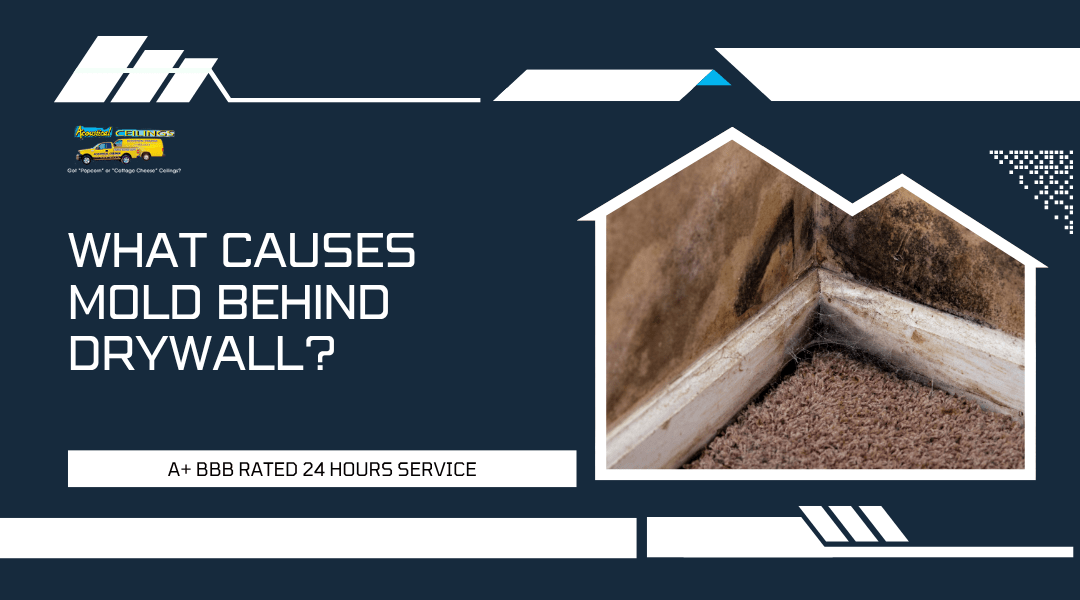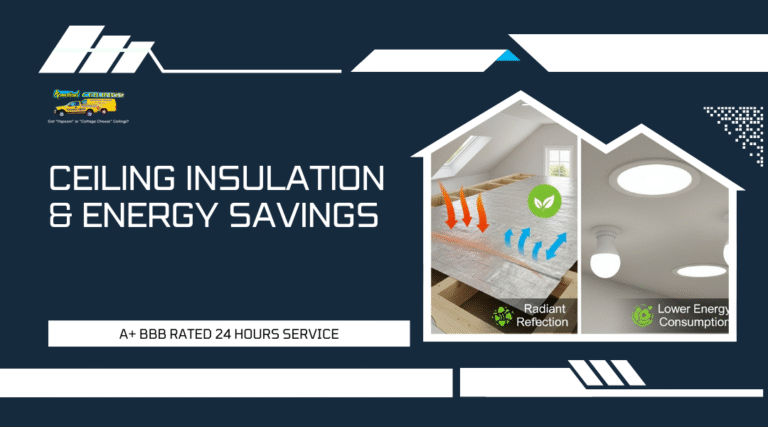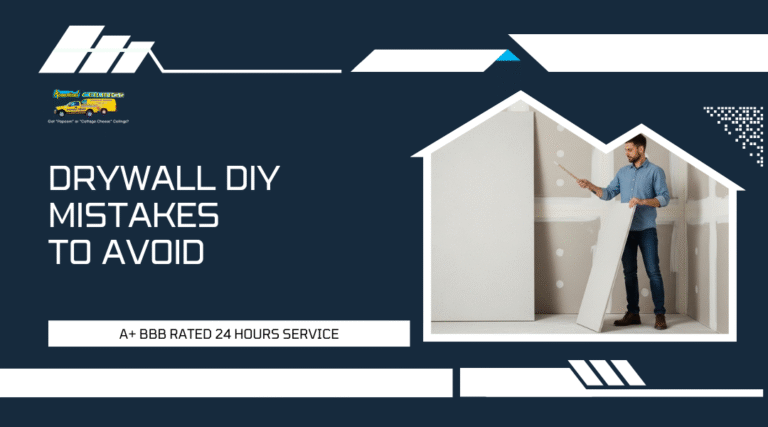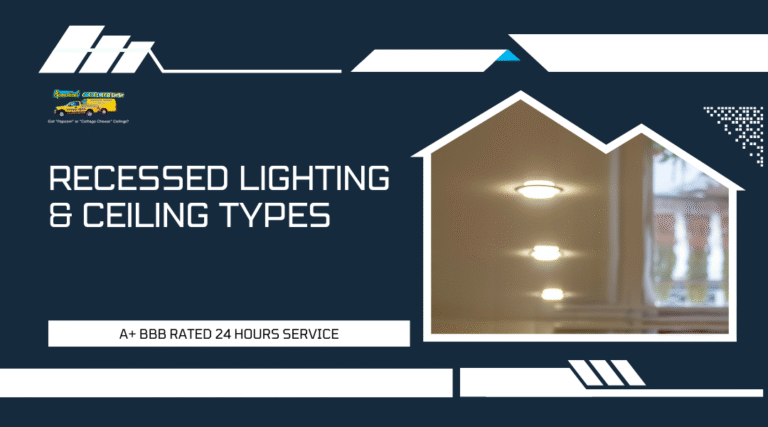Mold behind drywall is often caused by moisture trapped within the wall, which can result from leaks, high humidity, or poor ventilation. The presence of water allows mold spores to grow unseen, damaging the drywall and potentially affecting indoor air quality. Identifying and addressing these sources of moisture early is crucial to preventing mold growth.
Leaks from plumbing, roof damage, or condensation due to inadequate insulation are common triggers. Additionally, areas with consistently high humidity levels, such as bathrooms or basements, face a higher risk of mold developing behind drywall. Without proper airflow and moisture control, mold can remain hidden and spread, making detection more difficult.
Prevention focuses on controlling moisture through effective ventilation, timely leak repairs, and the use of mold-resistant materials. Regular inspections and maintaining humidity levels below 60% help reduce the chance of mold formation. These measures protect not only the structure but also the health of occupants.
The Problem: Why Mold Grows Behind Drywall
Mold develops behind drywall primarily when moisture accumulates and remains unchecked. It thrives in conditions that many homeowners might overlook, making hidden growth a common issue. Understanding these factors clarifies why drywall areas, especially in damp environments, become prime locations for mold.
The Ideal Conditions for Mold Growth
Mold requires moisture, warmth, and organic material to grow. Areas behind drywall often meet these needs due to leaks, high humidity, or poor ventilation. Moisture may come from plumbing leaks, roof damage, or condensation buildup.
Temperatures around 77°F (25°C) and above favor mold activity, but it can grow in lower temperatures if moisture and nutrients are present. Dark, enclosed spaces behind walls protect mold from sunlight, further encouraging growth.
Maintaining indoor relative humidity between 30-50% is critical to preventing mold. Without controlling moisture sources, mold spores settle and multiply on damp building materials unseen by occupants.
Why Drywall Is Particularly Susceptible
Drywall consists of a gypsum core sandwiched between paper layers. The paper is an organic material that mold can feed on. Gypsum itself holds moisture, creating an ideal environment for mold colonization once water is introduced.
Because drywall is often hidden behind paint or wallpaper, mold can grow undetected until symptoms appear, such as musty odors or staining. Even scrubbing surface mold without addressing behind-the-wall moisture won’t stop its return.
Mold can also grow in insulation behind drywall, worsening the issue. The porous nature of drywall and insulation traps moisture, creating persistent damp zones where mold thrives.
Health and Structural Risks of Hidden Mold
Mold spores released from hidden growth can degrade indoor air quality. People with allergies, asthma, or weakened immune systems may experience respiratory symptoms, headaches, or irritation.
Structurally, mold weakens drywall and framing materials over time. Persistent moisture causes wood rot and drywall deterioration, leading to costly repairs if left untreated.
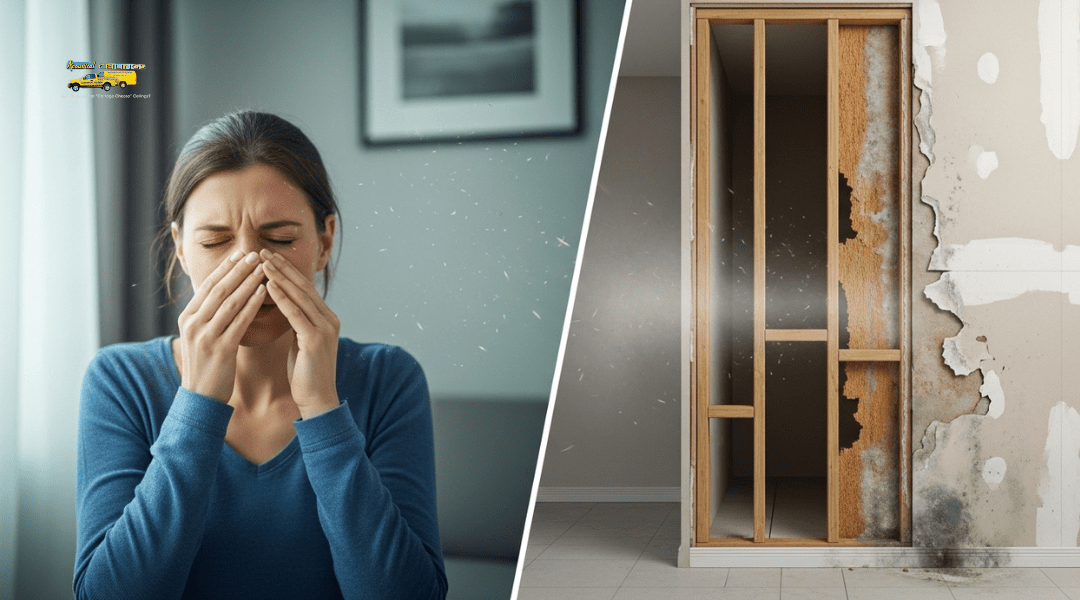
Because mold behind drywall often goes unnoticed, exposure and damage can increase gradually. Early detection is essential to protect both health and the integrity of the building.
Common Causes of Mold Behind Drywall
Mold behind drywall develops primarily when moisture accumulates in hidden wall cavities. Various factors contribute to this moisture buildup, often stemming from water leaks, environmental conditions, or construction issues. Identifying these causes helps target effective prevention and remediation efforts.
Plumbing Leaks and Water Intrusion
Leaking pipes inside walls are a frequent source of unseen moisture. Even slow drips or small leaks can create a damp environment within drywall cavities. Over time, this promotes mold growth on the paper facing and the drywall material itself.
Water intrusion through faulty plumbing seals, pipe joints, or damaged plumbing fixtures can go unnoticed for weeks. Signs such as damp spots on walls, musty odors, or recurrent stains might indicate plumbing leaks behind the drywall.
Since drywall absorbs water easily, persistent exposure from leaks often causes swelling and staining. Promptly repairing plumbing issues and drying affected areas can prevent mold colonies from establishing.
Poor Ventilation and High Humidity
Inadequate airflow in rooms with high humidity promotes condensation and moisture accumulation inside walls. Bathrooms, kitchens, and basements commonly experience elevated humidity that penetrates drywall assemblies.
Without proper ventilation systems like exhaust fans or dehumidifiers, moisture trapped in wall cavities can reach levels suitable for mold spores to grow. High indoor relative humidity above 60% increases this risk significantly.
Homes in humid climates or during warm seasons face ongoing challenges maintaining dry wall spaces. Routine ventilation and humidity control measures help reduce the chances of hidden mold development.
Flooding and Storm Damage
Floodwaters or heavy storms can saturate walls and drywall quickly. After a flood event, moisture may remain trapped behind drywall if not fully dried. This creates an ideal environment for mold within 24 to 48 hours.
Flood damage often affects large wall areas, making mold removal more difficult and costly. Water infiltration can come from basements, foundation cracks, or exterior wall breaches caused by storms.
Emergency drying and professional mold remediation are typically required after flooding to prevent structural damage and health risks associated with mold.
Condensation in Walls or Ceilings
Temperature differences between indoor and outdoor environments cause condensation to form inside wall cavities or ceiling spaces. This commonly occurs when warm, humid indoor air contacts cooler exterior walls or poorly insulated areas.
The resulting moisture collects on or behind drywall, especially in colder months or in homes with inconsistent insulation. Repeated condensation cycles saturate drywall materials over time.
Addressing insulation gaps, sealing air leaks, and managing indoor humidity can minimize condensation formation and thus reduce mold potential in walls and ceilings.
Improper Drywall Installation or Repairs
Drywall installed over damp or poorly prepared surfaces increases the risk of mold growth. Using drywall in areas with insufficient moisture barriers or without mold-resistant properties leaves it vulnerable.
Incomplete drywall repairs, such as leaving wet or damaged drywall in place, also contribute to mold behind walls. Water-damaged drywall materials that are not replaced can harbor mold spores.
To prevent mold, contractors should ensure walls are dry before installation, use mold-resistant drywall where appropriate, and perform thorough repairs if water damage occurs.
Warning Signs: How to Detect Mold Behind Drywall
Detecting mold behind drywall can be difficult because it often hides out of sight. Several physical indicators, unusual smells, and health-related symptoms can provide early clues to its presence.
Visible Stains or Discoloration
One of the most obvious signs is the appearance of stains or discoloration on the wall surface. These often look like irregular patches that are darker than the surrounding drywall. Common colors include green, black, brown, or white.
If the stains appear fuzzy or contain spotty patterns, this may suggest mold growth. It is important to differentiate between mold and water stains, although they often coexist. A simple test involves using diluted bleach on the spot; if the stain fades, it is likely mold.
Visible mold usually indicates a significant colony exists behind the wall and signals the need for immediate inspection and remediation.
Musty Odors and Damp Smells
Persistent musty or damp odors, even when no visible mold is present, are strong indicators of hidden mold. These smells arise from mold’s metabolic byproducts and trapped moisture.
Such odors often intensify in enclosed or poorly ventilated areas like closets or basements. They may become noticeable when the humidity is high or after rain, indicating trapped moisture behind the drywall.
A consistent unexplained musty smell should prompt further examination, including moisture measurement tools or professional inspection, as odors can precede visible signs.
Wall Warping, Bubbling, or Peeling Paint
Changes in wall texture such as warping, bubbling, or peeling paint may indicate moisture trapped behind drywall. These physical alterations occur when water weakens the drywall or paint bond.
Bubbling or blistering paint often signals prolonged dampness affecting the wall’s surface. Warping usually means the drywall has absorbed moisture, expanding and deforming.
These signs indicate potential mold growth areas because mold thrives in moist conditions. They warrant a prompt moisture check and possibly opening the wall to confirm or exclude mold presence.
Health Symptoms Linked to Mold Exposure
Exposure to mold behind drywall can cause health symptoms, especially in sensitive individuals. Common signs include sneezing, nasal congestion, itchy or watery eyes, and skin irritation.
More severe reactions could include coughing, wheezing, and respiratory difficulties, especially in people with asthma or weakened immune systems. These symptoms may appear or worsen when spending time near a suspected area.
Noticing unexplained allergy-like symptoms combined with other signs should encourage seeking mold testing and treatment to reduce risk.
Prevention Tips from Acoustical Ceilings
Proper materials and installation methods greatly reduce mold risks behind drywall. Controlling moisture, ensuring effective ventilation, and maintaining quick response to water damage are key to prevention. Regular checks can catch issues before they develop into mold problems.
Proper Drywall Installation Using Mold-Resistant Materials
Using mold-resistant drywall or moisture-resistant gypsum board is vital in areas prone to humidity. These materials contain additives that inhibit mold growth. Install drywall with tight seams and use mold-resistant joint compounds and primers.
Sealing edges and joints properly minimizes moisture penetration behind the drywall. Fasteners should be corrosion-resistant to avoid rust, which can contribute to mold development. Correct installation not only prevents mold but also maintains structural integrity.
Waterproofing and Moisture Barrier Techniques
Applying a moisture barrier between the framing and drywall adds essential protection in moisture-prone environments. Common barriers include polyethylene sheets or specialized waterproof membranes.
In bathrooms, kitchens, and basements, waterproof paints or sealants on drywall surfaces enhance resistance to dampness. Proper flashing around windows and external walls further reduces water infiltration that can reach drywall.
Best Practices for Indoor Ventilation and Humidity Control
Effective ventilation limits indoor humidity, reducing mold risk behind drywall. Use exhaust fans in kitchens, bathrooms, and laundry areas to remove moisture promptly.
Maintaining indoor humidity below 60% is critical. Dehumidifiers can help in basements or poorly ventilated spaces. Ensure HVAC systems are regularly cleaned and filters replaced to sustain airflow and minimize moisture buildup.
Timely Repairs of Leaks and Water Damage
Immediate repairs of leaks in plumbing, roofs, or walls prevent moisture accumulation behind drywall. Even small, slow leaks can fuel hidden mold growth.
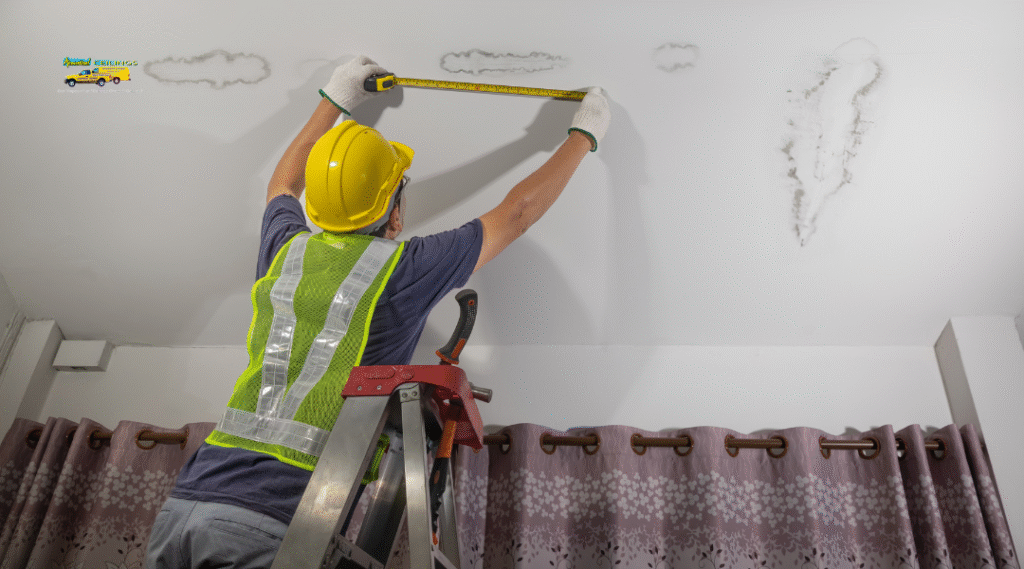
Inspect areas near water sources after storms or pipe work for signs of dampness. Remove and replace water-damaged drywall promptly, as mold can colonize quickly within 24-48 hours in moist conditions.
Routine Inspections and Maintenance
Regular inspections identify early signs of mold or moisture behind drywall before damage spreads. Look for discoloration, bubbling paint, or musty odors in suspected areas.
Focus inspections on high-risk zones such as around windows, plumbing fixtures, and exterior walls. Scheduled maintenance keeps moisture barriers intact and ventilation systems functioning. Document findings and address issues without delay.
What to Do If You Suspect Mold Behind Drywall
If mold is suspected behind drywall, immediate action is necessary to prevent health risks and further damage. Proper identification and timely intervention can limit mold spread and reduce repair costs.
When to Call a Professional
A professional should be contacted if the mold covers a large area, typically more than 10 square feet, or if the mold has penetrated deeply into the walls. Professionals have the tools to safely assess hidden mold through moisture meters and air quality tests. They can also detect mold that is not visible but causes musty odors or allergy symptoms.
If anyone in the home experiences persistent respiratory issues, this is an additional reason to seek expert help. Professionals also possess the necessary protective equipment and knowledge to manage mold without causing contamination in other areas.
Steps to Take Immediately (Before Mold Spreads)
First, isolate the affected area by closing doors and windows to limit air circulation. Avoid touching or disturbing the drywall to prevent spores from spreading.
Fix any identified leaks or sources of moisture promptly. Using fans or dehumidifiers can reduce humidity in the surrounding area but avoid high-pressure air circulation directly on the mold.
Wear protective gear such as gloves, masks, and goggles when inspecting or handling the area to limit exposure. Document the affected spot with photos for insurance or professional consultation.
Safe Mold Remediation and Wall Repair Services
Safe remediation involves removing contaminated drywall and any insulation behind it if mold has grown extensively. Specialists may use antimicrobial treatments to inhibit mold regrowth.
After removal, walls should be thoroughly dried and repaired to restore structural integrity. Replacing drywall should be done with moisture-resistant materials if possible.
Services often include addressing the root cause by repairing plumbing, improving ventilation, or installing vapor barriers. Using certified mold remediation professionals ensures adherence to safety standards and proper disposal of contaminated materials.
How Acoustical Ceilings Helps Protect Your Property
Acoustical Ceilings uses proven drywall installation methods combined with specific materials to minimize moisture and mold risks. Their expertise includes thorough repair and prevention approaches tailored to Rancho Cucamonga’s climate and housing conditions.
Our Drywall Installation Standards and Practices
Acoustical Ceilings follows strict drywall installation protocols designed to reduce moisture intrusion. They ensure walls and ceilings are sealed properly, using moisture-resistant drywall when necessary.
Installation includes careful framing inspections to detect leaks or water damage before drywall goes up. They avoid trapping humidity by allowing adequate ventilation in wall cavities. Fastening and taping are done meticulously to prevent gaps where mold could start.
These practices reduce mold growth risk by maintaining dry, well-ventilated spaces behind drywall, which is critical since mold thrives in damp, enclosed environments.
Tools and Materials We Use to Prevent Mold
Acoustical Ceilings employs moisture-resistant drywall and mold-inhibiting primers during installation or repair. These products contain antimicrobial agents to hinder mold spores from growing.
They use industrial-grade dehumidifiers and moisture meters during projects to monitor and control humidity levels below 60%, the threshold for mold development.
Sealing compounds and vapor barriers protect drywall from water vapor penetration. The company chooses fast-drying joint compounds to minimize the time drywall remains damp after installation or repair.
These tools and materials work together to create dry, mold-resistant wall systems.
Serving Rancho Cucamonga with Expert Repair and Prevention Solutions
In Rancho Cucamonga, where humidity and seasonal rains can cause water damage, Acoustical Ceilings offers targeted solutions. They assess and repair drywall damage promptly to prevent mold spread.
Their technicians identify hidden mold by inspecting wall changes, musty odors, or health symptoms linked to mold exposure. Repairs include removing compromised drywall sections and replacing them with treated materials.
Preventive maintenance services include sealing leaks, improving ventilation, and installing moisture barriers customized to the local environment. This comprehensive approach helps homeowners and businesses protect their investment effectively.

